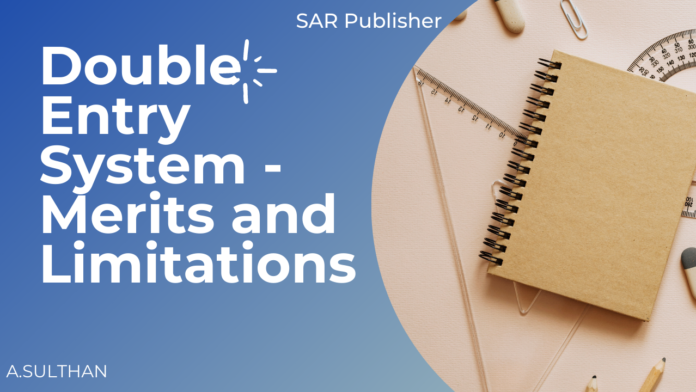Double entry system of accounting is more than 500 years old. In 1494, an Italian mathematician Luca Pacioli published Summa de Arithmetica, Geometria, Proportioni, et Proportionalita(“Everything about Arithmetic Geometry and proportions”). This is the first book that described a double entry accounting system.
This system of book-keeping has emerged in the process of evolution of various accounting techniques. It is the only scientific system of accounting. According to it, every transaction has two-fold aspects–debit and credit and both the aspects are to be recorded in the books of accounts. Therefore, in every transaction, at least two accounts are affected.
For example, on purchase of a computer either the cash balance will be reduced or a liability to the supplier will arise. and new asset computer is acquired.
This has been made clear already, the Double Entry System records both the aspects. It may be defined as the system which recognises and records both the aspects of transactions. This system has proved to be systematic and has been found of great use for recording the financial affairs for all institutions requiring the use of money.
•Every transaction is divided into two aspects, Debit and Credit
•One account is to be debited and the other account is to be credited
•Every debit must have its corresponding and equal credit
Advantages of Double Entry System
Double entry system delivers many advantages and so the system has been used extensively in all countries. The following are advantages of using this system
- Since personal and impersonal accounts are maintained under the double entry system, both the effects of the transactions are recorded.
- It ensures the arithmetical accuracy of the books of accounts. For every debit, there is a corresponding and equal credit.
- It prevents and minimizes frauds. Moreover, frauds can be detected early.
- Errors can be checked and rectified easily.
- The balances of receivables and payables are determined easily since the personal accounts are maintained.
- One can compare the financial position of the current year with that of the past year(s).
- This system provides information in decision making.
- The net operating results can be calculated by preparing the Trading and Profit and Loss A/c for the year ended and the financial position can be ascertained by the preparation of the Balance Sheet.
- It becomes easy for the Government to decide the tax.
- It helps the Government to decide sickness of business units and extend help accordingly.
- The other stakeholders like suppliers, banks, etc take a proper decision regarding grant of credit or loans.
Limitations
- The system does not disclose all the errors committed in the books accounts.
- The trial balance prepared under this system does not disclose certain types of errors.
- It is costly as it involves maintenance of numbers of books of accounts.
Subscribe and Support my YouTube Channel. Leave your queries in the comment section below.




